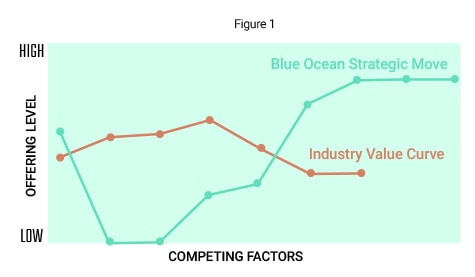In his brilliant essay “The Hedgehog and the Fox,” British philosopher Isaiah Berlin expands upon a tale attributed to the ancient Greek poet Archilochus and devices people into two categories: hedgehogs and foxes.
Often seen as a symbol of intelligence and cunning, the fox is a beautiful, sleek and crafty animal, able to conceive of innumerable complex strategies for attacking its prey. Day in and day out, the fox watches the comings and goings of his target in silence, circling around his den and waiting for the perfect occasion to pounce.
The hedgehog, on the other hand, has a cone-shaped face, short legs, and a body covered with porcupine-like quills. Despite these sharp spikes that serve as his suit, the hedgehog is a lovely animal. He wanders around searching for another snack to nibble, taking care of his home, and minding his own business. Vigilant and cautious, he senses danger at the slightest noise and always stays on guard.
“A fox knows many things, but a hedgehog knows one big thing,” Berlin summarized. While the fox sees the world from many points of view, the hedgehog focuses on one big idea and revolves his life around it.
When it’s time to position new and existing products to ensure customer loyalty, what kind of product professional are you: a fox or a hedgehog?
Do you calculate many different lines of attack for market penetration, employing various strategies to connect with your potential buyers whose needs vary according to the problems they want to solve? Or do you follow a simple path to position your products in the market and reach your potential buyers, focusing on achieving your goal and disregarding anything that doesn’t relate to your guiding principle?
Customer loyalty—the key to referrals, repeat purchases, and recurring business—is a highly sought objective by product professionals. Loyalty, however, is not instantaneous. It’s earned through consistency, which is why Berlin’s essay is particularly relevant.
“The Hedgehog and the Fox” has already been applied to business management in Jim Collins’ book Good to Great. Let’s see how it can be applied to product positioning.
Cunning Strategies
As smart as they may be, foxes find it difficult to summarize the positioning of their products into a guiding principle that can direct and align the activities of engineering, marketing, and sales. For them, the market is a complex environment; their buyers’ needs are scattered and the reasons to buy their products are broad. For these reasons, foxes prefer to play at different levels, pursuing many buyers in different markets and offering various features and functions. In this way, they hope to hit a target. Which one and for what reason? Ask them, and you’ll probably get a scattered or broad answer.
To integrate their thinking into a single idea, some foxes may see product positioning as the process that leads to the market message. Thus, they produce a document with nice, punchy words for use in external communications and product-launch activities. The most creative foxes also come up with a tagline or slogan built around the product’s features.
Unfortunately, these cunning strategies risk hitting the sharp spikes of their competitors, who may have applied the Hedgehog Concept for positioning new and existing products.
The Hedgehog Concept
In contrast to foxes, hedgehogs can clearly and concisely articulate the problems they want to solve for their buyers. They view the product positioning process through a converging lens that is focused on a single important idea: the reasons why customers will buy the product.
Hedgehogs simplify complex content into a single principle that unifies and guides the whole organization. Their product positioning is a concise, one-page document that provides other departments with a complete understanding of who the product is for, why they will want it and which pain points are being solved.
Because they want to build a product that will solve potential buyers’ problems or meet unmet needs, hedgehogs execute the positioning activity first, before applying for resources and developing the product. This way, they have everything in hand to gain executive approval.
For them, product positioning is an internal deliverable, shareable with all departments—from engineering to marketing and communications, and even sales. Here’s why.
Engineering and Development
Because they face many choices, the engineering and development team needs context and clarity about what they’re doing in order to make the right decisions. By clearly articulating what problem needs to be solved and for whom, the technical team adds value to the development process. They also have the capacity to prioritize certain activities.
Marketing and Communications
In charge of writing external messaging, creating web content, and producing advertisements, the marketing and communications team needs to understand the problems that the market wants to solve. This way, they can highlight the product’s distinctive capability and connect with buyers. Rather than receiving the fox’s tedious technical document full of explanations of features and functions, the hedgehog will provide the essential elements required to deliver the proper message.
Sales Team
If the sales team knows why the product has been built and for whom, explaining to potential buyers how the product solves their problems and meets their needs becomes clearer. With the Hedgehog Concept of positioning, the sales team can focus on the important benefits that will attract the technical buyer or the ROI that will appeal to the economic buyer, ultimately ensuring the loyalty of both.
Nevertheless, some executives and colleagues from other departments might resist the idea that complicated challenges and significant dilemmas can be formulated in such a simple way. Product managers using the Hedgehog Concept could even be perceived as simpletons. Facing such simplicity, their hierarchy and colleagues may believe that a large portion of information is missing or has been forgotten or ignored.
Despite peer pressure to focus on details, Princeton Professor Marvin Bressler recalls the power of the hedgehog during a conversation with Jim Collins: “You want to know what separates those who make the biggest impact from all the others who are just smart? They’re hedgehogs.” Freud, Einstein, Darwin, Marx: They were all hedgehogs.
“That’s been one of my mantras—focus and simplicity. Simple can be harder than complex: You have to work hard to get your thinking clean to make it simple. But it’s worth it in the end because, once you get there, you can move mountains.”
-Steve Jobs
In short, it doesn’t matter how complex the positioning journey is for a hedgehog because he can convert all challenges and dilemmas into clear and concise ideas. Anything that doesn’t relate to a simple principle holds no relevance.
So, how do you position your new and existing products according to the Hedgehog Concept? What fundamental elements are required for your one-page document that will serve as a guiding principle for your colleagues in engineering, marketing, and sales? Where do you need to focus and centralize your efforts? The following pillars will help you clearly and concisely position your product to ensure customer loyalty.
Pillar 1: Picture the Competitive Landscape
Do you have a simple picture that captures your competitive landscape and that any member in the organization can understand? Do you know the key factors you and your competitors battle for? Do you know what differentiates your product? These are the questions that W. Chan Kim and Renée Mauborgne address in their book Blue Ocean Shift.
Like a hedgehog, Kim and Mauborgne transformed this information into a one-page visual analytic called a strategy canvas, which captures an organization’s current strategic landscape and its future prospects. It depicts the way an organization configures its offering to buyers relative to its competitors.

Immediately, you can see that when your organization gets a high score on the vertical axis, it means your product solves the buyers’ problems in a better way, offering them more. On the other hand, a relatively low score on the vertical axis means your product doesn’t perfectly meet the needs of your market or it offers less than your competition. By connecting the dots, you get a simple, concise view of your organization’s relative performance across its industry’s factors of competition. You also see the same for your competitors.
Pillar 2: Define Insightful Buyer Personas
Do you have a simple representation of the buyers to whom you are trying to sell? Do you know what their shared pain points are? Can you describe their common behavioral patterns? Do you know what goals they pursue in their daily activities?
These are the questions you need to answer to create your buyer personas. As a hedgehog, you will use these personas to highlight the four primary elements of your buyers: their goals, challenges, objections, and decision criteria.
With this information in hand, the engineering, marketing, and sales teams can tailor their product development, messaging and offering to match these buyers’ needs, behaviors, concerns, preferences, and requirements.
If market research is conducted properly, the four basic elements—goals, challenges, objections, and decision criteria—will offer insights regarding:
- Which companies are your most likely potential clients
- Who within the company prompts the search
- When the best time is to approach a potential client
- Which performance results the client hopes to achieve with the purchase
- Who is involved in the buying decision
- Which features matter to them
- What resources they trust for product evaluation and advice
- What barriers might prevent them from buying
Pillar 3: Build a Well-Constructed Value Proposition
Do you have a simple formula that highlights your value proposition? Can you describe—in the buyer’s words—the problem that you are trying to solve? Do you know the most important key factors that the personas will use to determine the value of your offering? Do you know the unique feature that sets your product apart from the competition? Can you prove the credibility of your product with indisputable facts? Your value proposition must answer these questions.
Inspired by Mike Gospe’s book, Marketing Campaign Development, a well-constructed value proposition can be built with a simple formula:
Value Proposition = Problem + Value Driver + Differentiator + Evidence
Problem: A technological challenge or an operational problem that buyers need to address or solve.
Value driver: An operational, technological or personal outcome that buyers use to define the value of an offering.
Differentiator: A product offering’s unique feature that sets it apart from competing products.
Evidence: Indisputable facts that establish credibility by offering proof that your message is accurate.
Adding these four elements in a statement allows product professionals to articulate in a clear, concise way—as prescribed by the hedgehog—the perfect match between your buyers’ problems and your organization’s offering.

Applying the Hedgehog Concept to product positioning has a positive impact on the development, marketing, and sales teams because the whole organization must access the same essential information from which they can work together.
The Hedgehog Always Wins
Successfully positioning new and existing products enables product professionals to ensure customer loyalty. The importance of positioning should not make its execution more complicated and difficult Simply put, the goal of positioning is to find the intersection of the product’s benefits and the customer’s most important need.
If you are deploying myriad fancy strategies, diverging from your objective or incapable of synthesizing your research and describing it in a single page, these are signs that you’re acting like a fox. “Despite the greater cunning of the fox, the hedgehog always wins,” explained Collins, who documented what characterizes good-to-great companies and established the Hedgehog Concept in his book.
Regardless of the fox’s line of attack, chosen path, or strategic plans, the little hedgehog always manages to thwart his attack. Sensing the danger, he simply rolls up into a perfect ball of sharp spikes and waits for his attacker to appear. Each time the fox faces the hedgehog’s defense, he must abandon the offensive and pull back to the forest. Nevertheless, these repeated setbacks never prevent him from making plans that are, more or less, the same as his previous strategies.
When the fox feels certain he’s catching the hedgehog, jumping over the ground lightning-fast and proudly shouting, “Aha, I’ve got you now!”, the little hedgehog thinks, “Here we go again. Will he ever learn?”
Learn More
Certification Courses
- Foundations: Uncover the secrets of creating a market-driven organization
- Build: Because having a plan is not the same as having a product
- Market: Drive revenue growth, customer acquisition and brand awareness
Authors
-

Etienne Fiset, MBA, EE, brings 21 years of expertise to the realm of marketing high-technology products. His journey includes impactful roles at Infineon Technologies and Gentec Inc., where he excelled in guiding technology innovators. Etienne is recognized as a proficient strategist in companies such as Nutaq, Pragmatic Institute, and Novo123. For any inquiries or questions, please contact [email protected].
View all posts -

Stephanie Labrecque, a thought leader in technology product management with 25 years of experience, has left a lasting impact at organizations such as Nortel Networks, Gentec-ceo, and Pragmatic Institute. Her expertise extends to addressing the unique issues and challenges inherent in creating technology-powered products, services, and experiences. Associated with Inspira Strategies, Stephanie remains dedicated to advancing the product management field. For questions or inquiries, please contact [email protected].
View all posts








